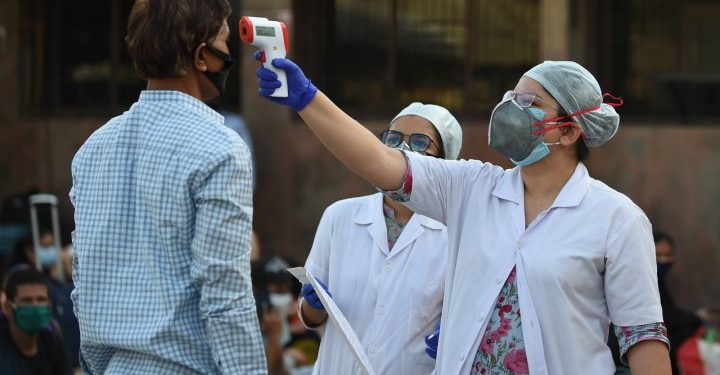With public activities remaining paralysed, democracy has been on slow gear during past two months. Its reactivation could happen in altogether new ways, the contours of which are not clear as yet. The emerging scenario may have a telling effect on the election process amid feelings that the world will have to live with COVID-19 pandemic for a few years at least.
While the COVID pandemic and the following lockdown stalled all public activities, politics by and large reared its head only through TV screens. Even with activities resuming in part, a return to old style histrionics dependent on large crowded gatherings and road shows may not be near at hand. New trends are being set, as Home Minister Amit Shah addressed a virtual rally of the BJP in Bihar, speaking to partymen and others spread across the state on Sunday. Congress leaders Sonia Gandhi and Rahul Gandhi too are reaching out to people and party functionaries largely through video conferences and interviews. The Prime Minister is holding video conferences with chief ministers and deciding on lockdown strategies. With India’s COVID status seeing a steady rise and its position reaching the sixth position worldwide, hints are that public activities in the country will remain curtailed for longer periods. Sooner than later, India could find itself as the worst-hit nation in terms of COVID-spread. Interestingly, US President Donald Trump has said that if sincere testing is done, India and China will find their figures much higher than America.
In the given scenario, how elections to state Assemblies –the largest exercise after Parliament polls – can take place is anybody’s guess. The first test will be in Bihar, and the Election Commission will, in consultation with political parties, have to make several allowances to the democratic process. Stalling the election process for an unending period cannot be the way forward. However, this is also the time to see how reforms can be effected to the campaign methods and polling.
The large-scale changes will impact the complete tree of democracy in India. Starting from the roots, the Panchayat level election to the top, the Parliament polls, everything should be included if a transformation does take place. It is difficult to predict if the reforms and changes will last long. However, the present situation forces everyone to ensure no one comes in physical proximity to others. This is a concept that has never been explored in Indian political history. The very basic ethos of politics in this country has always been to gather bigger and even bigger crowds. The credibility of a leader is measured by the size of the crowd s/he draws. Worthy candidates are known to have lost elections since they were not capable of mustering huge crowds. Logistics are essential ingredients in the poll preparations of all capable contestants. Compared to the size and bulk of men and machines used by the candidates, the Election Commission’s preparations at the governmental level seem very negligible. The expenses incurred by the Election Commission are official and truthfully declared. In comparison, not a single candidate tells the truth about the expenses incurred for campaigning. However, a comparison of the governmental preparation and candidates’ logistics offer a clear indication of the huge amounts spent during that period.
If Covid19 successfully curtails physical rallies and scares people enough to stay away from large gatherings then it may have done a yeoman service to Indian democracy. Not only will the investments in campaigns go down drastically but also, probably, the play or role of money could be greatly downsized. Such a situation may compel Indian politicians to speak more about policies and programmes rather than on sops and enticements. The transition, most likely, could be slow but it would definitely be better for the average citizen of the country. To sum up the situation, it can be said that if this scenario lasts long enough, it may change India’s election process permanently.






































